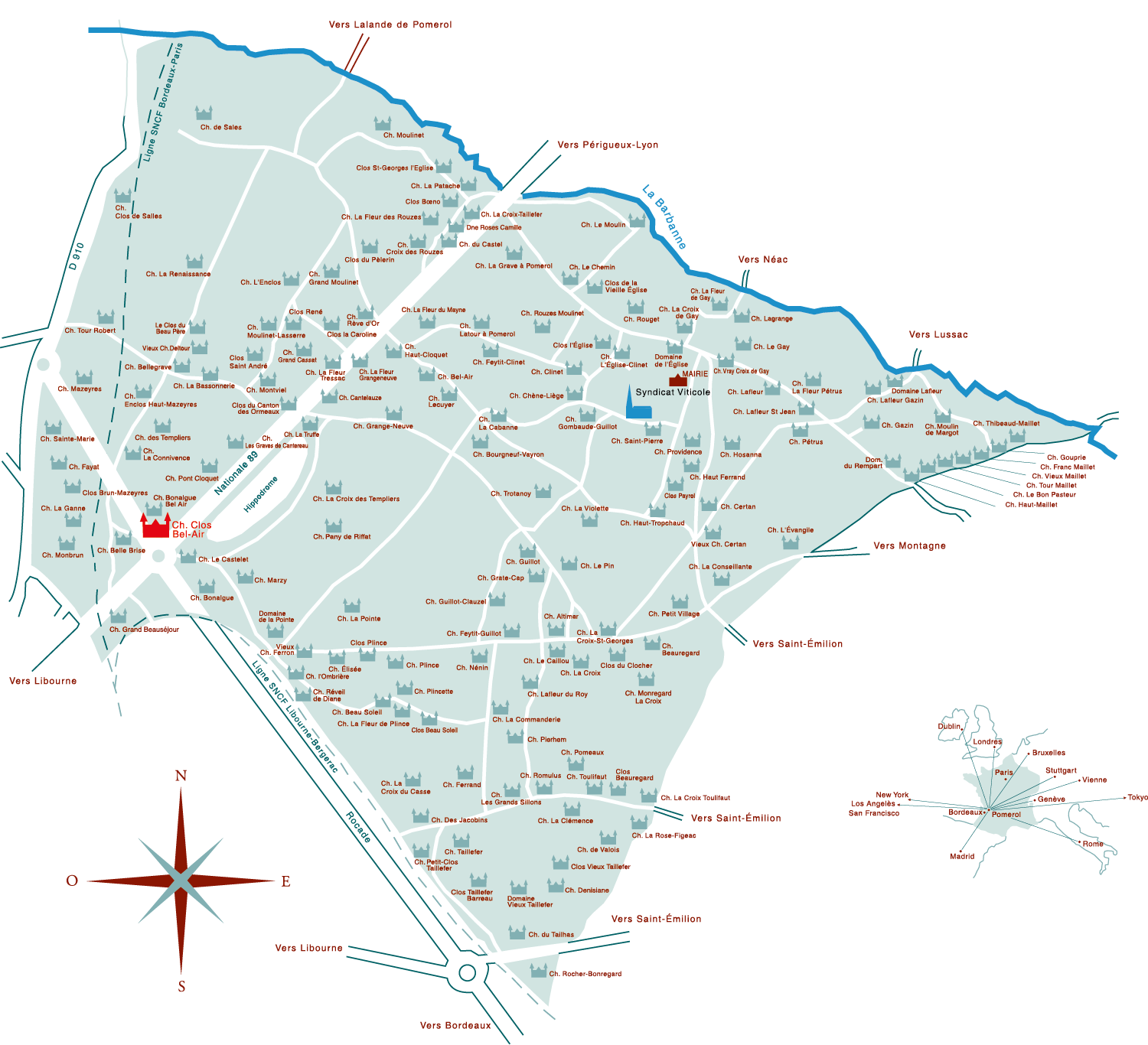TERROIR
TERROIR
The south / south-east vineyard exposure represents a unique and exceptional geological composition of beautiful gravel, clay and sand which shapes Merlot and Cabernets in an elegant, gourmet, fresh and racy way.
The subsoils, made up of a blue clay soil are rich in iron, which have the particularity of retaining the water and returning it to the plant during dry periods. This natural regulation system allows the grape varieties to express density, velvety texture and great delicacy. A unique soil characteristic in Pomerol and very rare elsewhere in the Bordeaux vineyard.
To this ideal soil and subsoil is added a temperate oceanic micro-climate which contributes to the excellence of the wines.


POMEROL
The plateau is composed on the surface of more or less compact gravel, whether clayey or sandy. The subsoil is richly endowed with iron oxides called “crasse de fer”, which give Pomerol its unique character.
